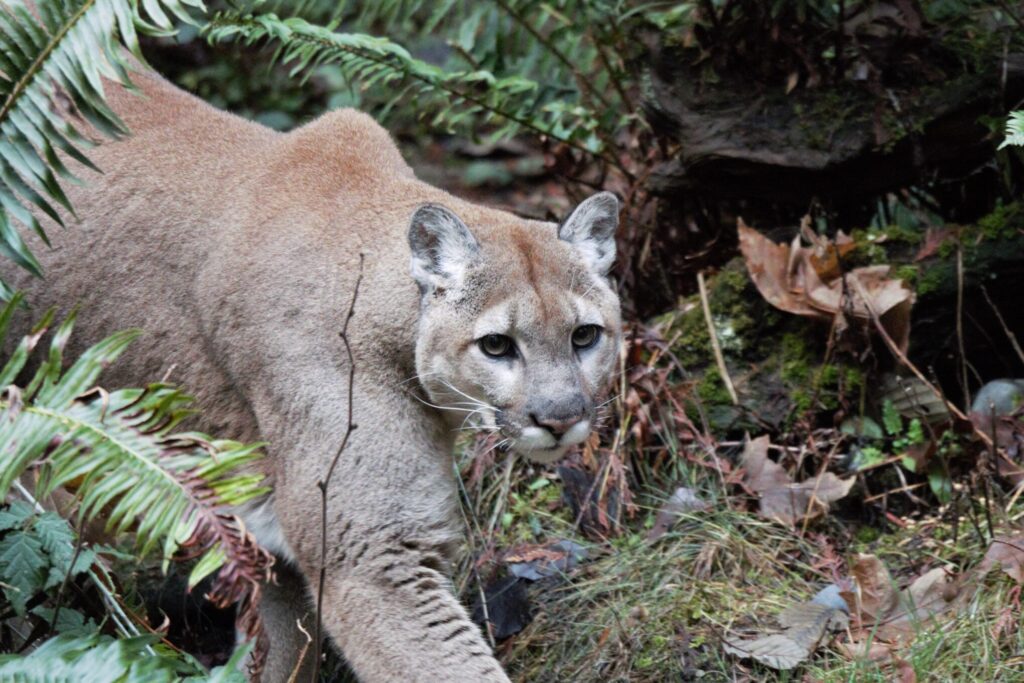
Large carnivore persistence in an increasingly human-dominated world requires coexistence between carnivores and people on shared landscapes. Yet, sharing space with carnivores presents challenges, including maintaining sufficient habitat to allow carnivores to satisfy life-history needs (e.g., hunting, dispersal, and territory establishment) while avoiding conflict with people. To understand the drivers of carnivore habitat use and conflict in shared landscapes, CSP led a team of scientists aiming to quantify puma (Puma concolor) habitat selection while moving and while feeding on native prey across a mosaic of developed areas, working landscapes, and wildlands on the Olympic Peninsula, Washington, USA. Model results suggested that puma habitat selection was more strongly influenced by human land uses when moving than when feeding, with adult females being the only age-sex class to exhibit avoidance of development and agriculture when feeding. Correspondingly, areas categorized as highly suitable for feeding but unsuitable for movement tended to have substantially greater amounts of developed and agricultural land than areas considered suitable for both behaviors. Analysis of puma–human interactions revealed that habitat preferences when feeding were strongly associated with the probability of both domestic animal depredations and sightings of pumas by people across most puma age-sex classes (except adult females). These findings suggest that pumas are encountering livestock, pets, and people opportunistically in areas that are otherwise highly suitable for hunting native prey, but that sensitivity to human disturbance when moving across the landscape leads to limited opportunity for conflict when engaged in this behavior. We leveraged these findings to explore pathways toward stable puma–human coexistence based on achievable changes to human behavior that minimize conflict opportunities.
[Read the full paper]
Habitat suitability (measured as relative probability of selection by pumas) for (a) movement and (b) feeding on kills across the study area in the Olympic Peninsula, Washington, USA, as predicted by the top pooled integrated step selection analyses (iSSA) and resource selection function (RSF) models, respectively. The bivariate map in (c) illustrates overlap in areas categorized as low, medium, or high suitability for movement and feeding. 1 mile = 1.6 km.

